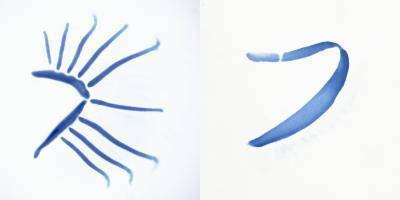Genetic tools that animals use to form fins and limbs are similar to genetic tools that control bone growth in sharks, according to a new study.
The study was published in the Proceedings of the National Academy of Sciences in March 23, 2009. Authors include Andrew Gillis and Neil Shubin of the University of Chicago, and Randall Dahn of Mount Desert Island Biological Laboratory.
Andrew Gillis, the lead author of the paper, is currently a graduate student at the Department of Anatomy and Biology at the University of Chicago, said: 'In fact, the bones of any additional part of an animal's body are The result of the genetic development program creates sharks. We have followed the evolutionary origin of the genetic development program to form fins and limbs. '
This new finding is consistent with an old theory , often not mentioned in scientific books, that fins and limbs evolved from the gills of an extinct vertebrate species. Gillis added: 'Fossil scarcity prevents us from making the final conclusion that fins evolve from gills. However, this study shows that the genetic structure of gills, fins and limbs is identical '.
The study is based on the discovery of the Tiktaalik fossil, a breakthrough fish of Neil Shubin and colleagues in 2006. Shubin, the lead author of the PNAS article, professor of evolutionary biology At the University of Chicago, commented: 'This is another proof of the evolutionary cycle using conventional development programs to create different anatomical structures. In this case, the general development mechanism of the formation of gills and fins of vertebrates'.
 Bone bearing. Bones that carry the ring (left) show that the original form of rays is only found in sharks and other cartilaginous species. Bearing of other fishes (right) also round but no rays. This primitive nature of sharks allows scientists to link fin genetic development programs to the original genetic development program of gills. (Photo: J. Andrew Gillis, University of Chicago).
Bone bearing. Bones that carry the ring (left) show that the original form of rays is only found in sharks and other cartilaginous species. Bearing of other fishes (right) also round but no rays. This primitive nature of sharks allows scientists to link fin genetic development programs to the original genetic development program of gills. (Photo: J. Andrew Gillis, University of Chicago).
The study also showed for the first time that the gill bones of stingray embryos (relatives of sharks that carry the ray form) responded to the treatment of vitamin A-derived retinoic acid similar to limbs or fins: make a copy of the structure when the embryo develops.According to the researchers, the genetic ring forms the outer parts of the body (arms, legs and fins) that originated earlier than these parts themselves.
Gillis said: 'These findings suggest that when paired parts appear, the mechanism used to structure the bones is the mechanism that makes the gills. Maybe we should conceive that shark gills are another out-of-body part of vertebrates - formed similarly to fins and limbs'.
Similar structural, functional, and regulatory characteristics between paired and ray-like parts, as well as the originality of gills versus paired parts, show that the signaling network is caused by retinoic acid. function of gill formation before pairs of vertebrates in the vertebrate appear.
Refer:
J. Andrew Gillis, Randall D. Dahna, and Neil H. Shubin.Đang tạo cơ sở dữ liệu tạo cơ sở dữ liệu của gill vertebrate, arch and paired skeletons finProceedings of the National Academy of Sciences, 2009;DOI: 10.1073 / pnas.0810959106
 Surprised: Fish that live in the dark ocean still see colors
Surprised: Fish that live in the dark ocean still see colors Japan suddenly caught the creature that caused the earthquake in the legend
Japan suddenly caught the creature that caused the earthquake in the legend A series of gray whale carcasses washed ashore on California's coast
A series of gray whale carcasses washed ashore on California's coast Compare the size of shark species in the world
Compare the size of shark species in the world